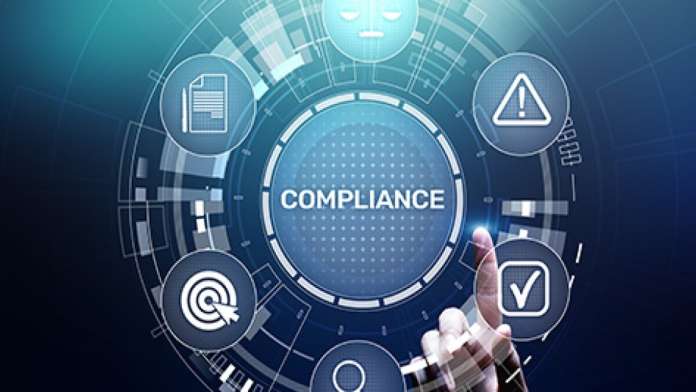In today’s fast-paced digital landscape, Software as a Service (SaaS) has revolutionized how businesses operate, offering scalable solutions that are easy to deploy and manage. However, as businesses increasingly rely on cloud-based services, the importance of SaaS compliance becomes paramount. SaaS compliance refers to a set of standards and regulations designed to protect customer data, ensure privacy, and maintain operational transparency.
Why SaaS Compliance Matters for Trust:
For SaaS companies, adhering to compliance standards isn’t just a legal obligation but a cornerstone of building customer trust. Regulatory frameworks like GDPR, SOC 2, and HIPAA set the groundwork for the secure handling of sensitive information, ensuring clients’ data is protected against breaches and misuse.
Non-compliance can lead to severe consequences, including hefty fines, legal action, and reputational damage. Therefore, understanding and implementing SaaS compliance not only safeguards your business but also enhances its credibility.
Moreover, in an era where data breaches make headlines, showing a commitment to compliance can serve as a significant competitive advantage. Companies that meet industry standards often experience greater customer loyalty, reduced risk, and streamlined operations.
In this blog, we will delve deeper into the critical compliance standards such as GDPR, SOC 2, and HIPAA. We will also outline the essential steps to achieve and maintain SaaS compliance, and discuss the broader importance of data security in this sector. By the end, you’ll grasp why investing in compliance is a must for any SaaS provider aiming to build trust and grow sustainably.
Understanding Key Compliance Standards: GDPR, SOC 2, and HIPAA
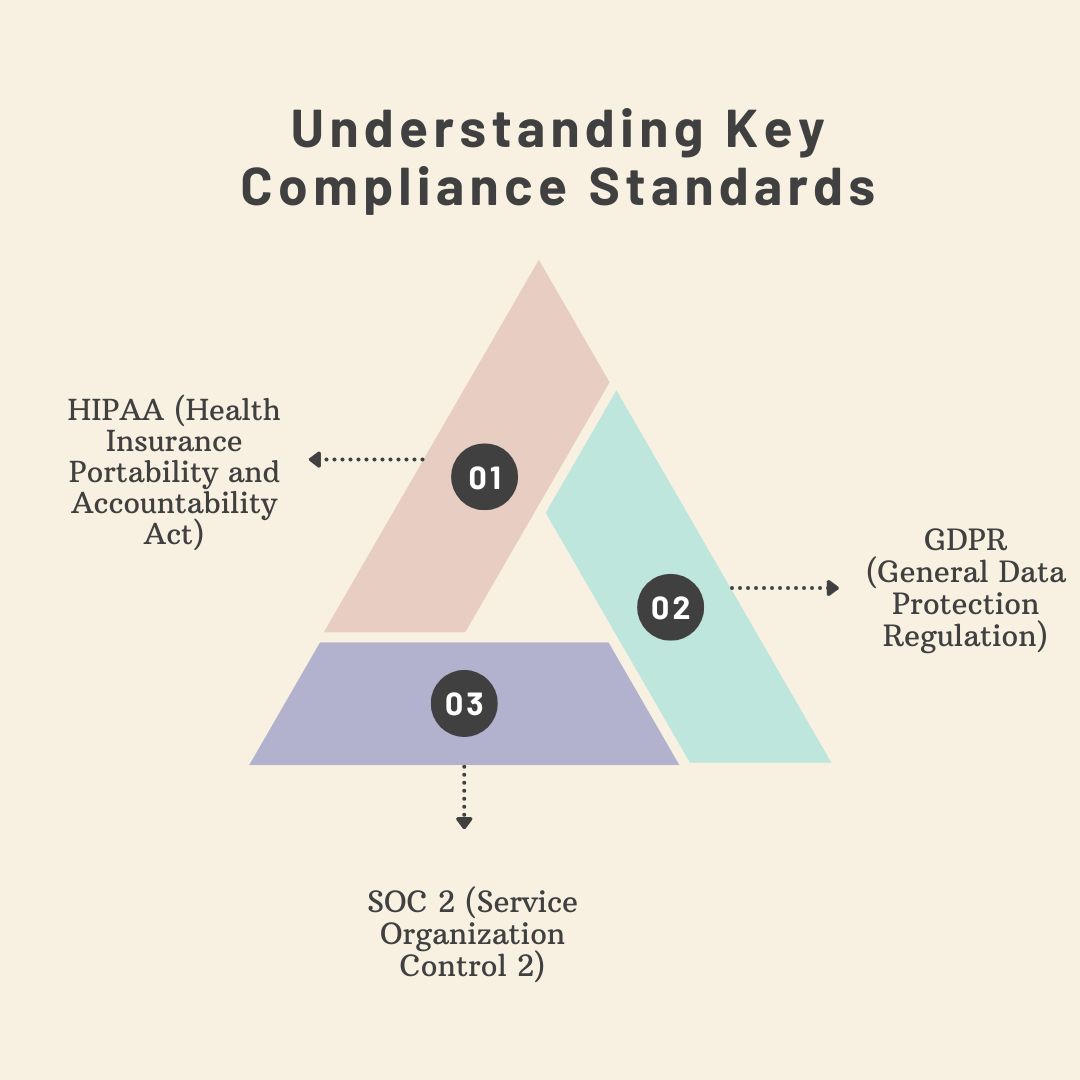
In the realm of SaaS (Software as a Service), complying with various regulatory standards is crucial for maintaining trust and safeguarding data. Among the most significant compliance standards are GDPR, SOC 2, and HIPAA.
-
GDPR:
GDPR (General Data Protection Regulation)** primarily governs the protection and privacy of personal data across the European Union. Introduced in 2018, GDPR mandates that companies handle user data with utmost care, ensuring transparency, data minimization, and the right to be forgotten. Non-compliance can result in hefty fines, making adherence pivotal for any SaaS provider dealing with European customers.
-
SOC:
SOC 2 (Service Organization Control 2) focuses on the internal controls of a service organization, particularly those related to security, availability, processing integrity, confidentiality, and privacy of data. Designed by the AICPA (American Institute of CPAs), SOC 2 audits ensure that SaaS companies implement stringent policies and procedures to safeguard customer data. Achieving SOC 2 certification not only enhances a company’s reputation but also reassures clients about their data security measures.
-
HIPAA:
HIPAA (Health Insurance Portability and Accountability Act) is a U.S. regulation aimed at protecting the privacy and security of healthcare information. SaaS providers that handle Protected Health Information (PHI) must comply with HIPAA’s strict standards for data protection and breach notification. Compliance with HIPAA is non-negotiable for companies in the healthcare sector, as it underscores their commitment to patient confidentiality and data integrity.
By understanding and adhering to these key compliance standards, SaaS providers can enhance their credibility, attract a broader client base, and avoid potential legal pitfalls. Ultimately, strong compliance practices translate to robust data security and customer trust, fostering long-term business success.
Key Steps to Achieve SaaS Compliance
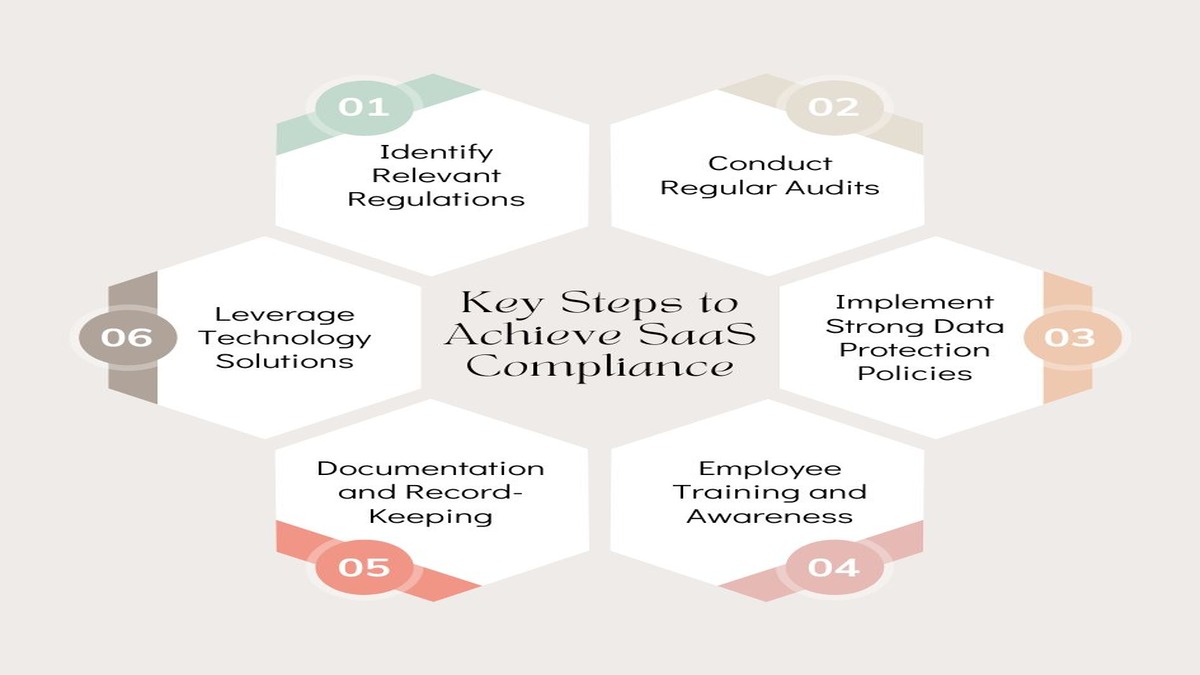
Achieving compliance in the Software as a Service (SaaS) industry is crucial for both legal reasons and customer trust. Here are some essential steps to follow:
- Identify Relevant Regulations: First and foremost, identify which regulations apply to your business. This could include the General Data Protection Regulation (GDPR) for companies dealing with European customers, SOC 2 for service organizations, and Health Insurance Portability and Accountability Act (HIPAA) if you’re handling healthcare information.
- Conduct Regular Audits:Regular audits are essential for identifying gaps in your compliance program. These audits help you understand where you stand and what improvements need to be made to meet regulatory requirements. Engage third-party auditors if necessary for an unbiased perspective.
- Implement Strong Data Protection Policies: Safeguarding customer data should be a top priority. Implement robust data encryption both at rest and in transit. Ensure access controls are in place so that only authorized personnel can access sensitive information.
- Employee Training and Awareness: Your workforce should be well-versed in compliance standards and best practices. Regular training sessions are vital to keep everyone updated on the latest regulatory changes and how to handle sensitive data securely.
- Documentation and Record-Keeping: Keep meticulous records of all compliance-related activities, from audit reports to employee training sessions. Proper documentation is often required to prove your compliance status during audits and inspections.
- Leverage Technology Solutions: Use compliance management tools and software to streamline the process. These technologies can automate many tasks like data monitoring, reporting, and even risk assessment, making it easier to stay compliant.
Achieving SaaS compliance may seem daunting, but by taking these steps, you will be well on your way to creating a secure, trustworthy service that meets all relevant regulatory requirements.
The Importance of Data Security in SaaS
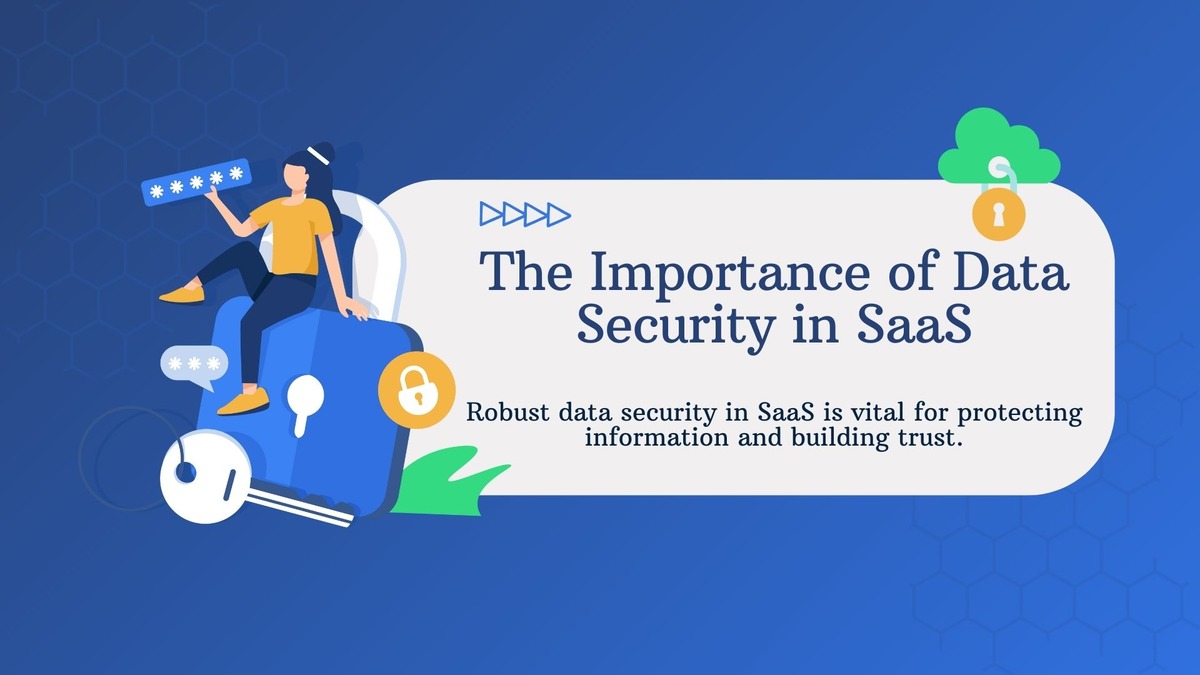
In the realm of Software as a Service (SaaS), data security isn’t just a luxury—it’s a necessity. As more businesses move their operations to the cloud, safeguarding sensitive information becomes the cornerstone of trust and reliability. Ensuring robust data security in SaaS platforms goes beyond just keeping hackers at bay. It involves a thorough strategy to protect data from unauthorized access, breaches, and leaks.
- Encryption in Data Security: Data security in SaaS starts with encryption. Both data at rest and data in transit should be encrypted to prevent unauthorized users from accessing sensitive information. This includes using protocols like SSL/TLS for data in transit and AES encryption for data at rest.
- Access Control: Another critical element is access control. Implementing role-based access ensures that users only have the permissions necessary for their tasks. Multi-factor authentication (MFA) adds an extra layer of security, making it harder for cybercriminals to breach accounts, even if they obtain passwords.
- Audits and Compliance: Regular audits and vulnerability assessments are equally important. These help identify potential weak points in your system before attackers can exploit them. Compliance with standards like GDPR, SOC 2, and HIPAA also mandates periodic reviews and adherence to specific security measures, which serve as additional checkpoints.
- Employee Security Training in SaaS: Lastly, educating employees about security practices is crucial. Human error often remains one of the biggest vulnerabilities in any system. Training programs can significantly reduce the risk of data breaches caused by phishing attacks or unintentional disclosures.
Prioritizing data security in your SaaS platform not only keeps information safe but also builds customer confidence. When clients know their data is in good hands, they are more likely to trust your service, leading to long-term customer loyalty and business growth.
Benefits of Adhering to Regulatory Frameworks
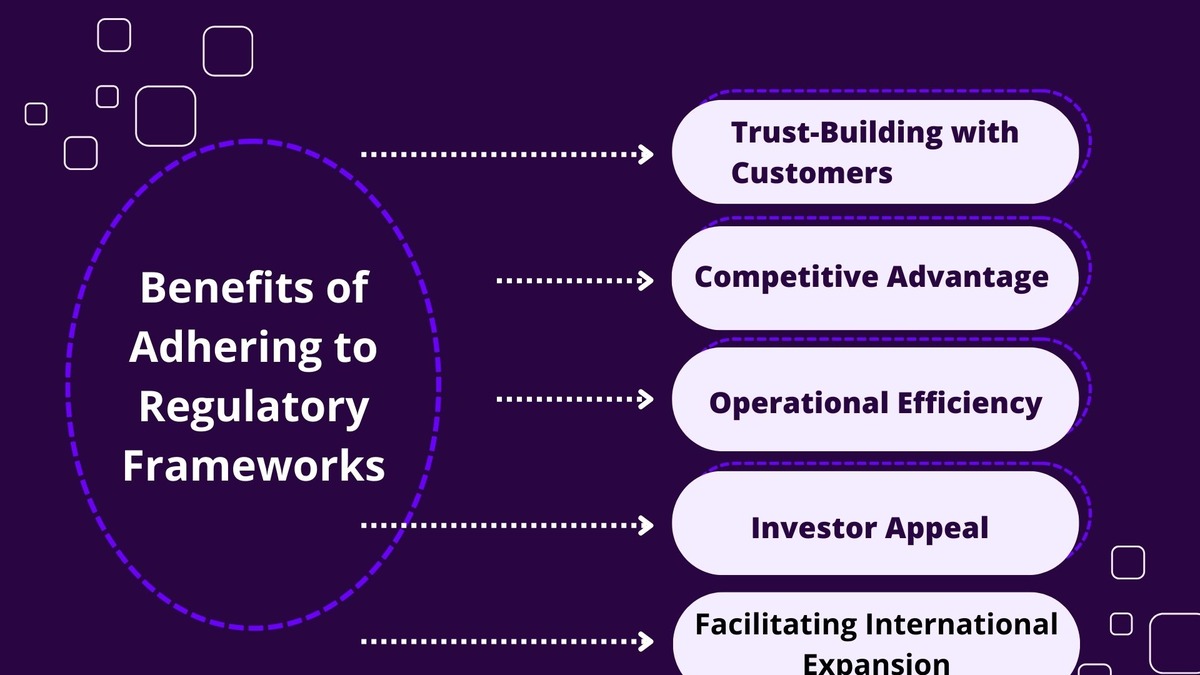
Adhering to regulatory frameworks in SaaS offers numerous advantages that extend beyond mere legal compliance.
- Trust-Building with Customers: One of the most significant benefits is trust-building. When your SaaS company demonstrates compliance with industry standards like GDPR, SOC 2, and HIPAA, it signals to customers that their data is handled with the utmost care. This trust can enhance customer loyalty, making your product more attractive to prospective clients who prioritize data security and privacy.
- Competitive Advantage: Moreover, compliance can act as a competitive differentiator. In a crowded SaaS market, showcasing your commitment to regulatory frameworks can set your service apart from others. This competitive edge can be crucial for attracting enterprise clients who often require stringent security measures.
- Operational Efficiency: Operational efficiency is another advantage. Adhering to established guidelines pushes you to implement best practices in your data handling and security protocols. This can minimize risks, streamline processes, and reduce the likelihood of costly data breaches or compliance-related fines.
- Investor Appeal: Investors and stakeholders also view compliance favorably. Demonstrating that your SaaS product meets regulatory standards can make your company more appealing to investors who are looking for secure and reliable investment opportunities. This can open doors for future funding, partnerships, and growth initiatives.
- Facilitating International Expansion: Lastly, regulatory compliance can facilitate smoother expansion into international markets. Different regions have varying compliance requirements, and adhering to recognized frameworks can ease the process of adapting to local laws.
In summary, adhering to regulatory frameworks isn’t just about avoiding penalties; it’s a strategic move that can build trust, provide a competitive edge, boost operational efficiency, attract investment, and facilitate global expansion.
Conclusion: Building Trust Through SaaS Compliance
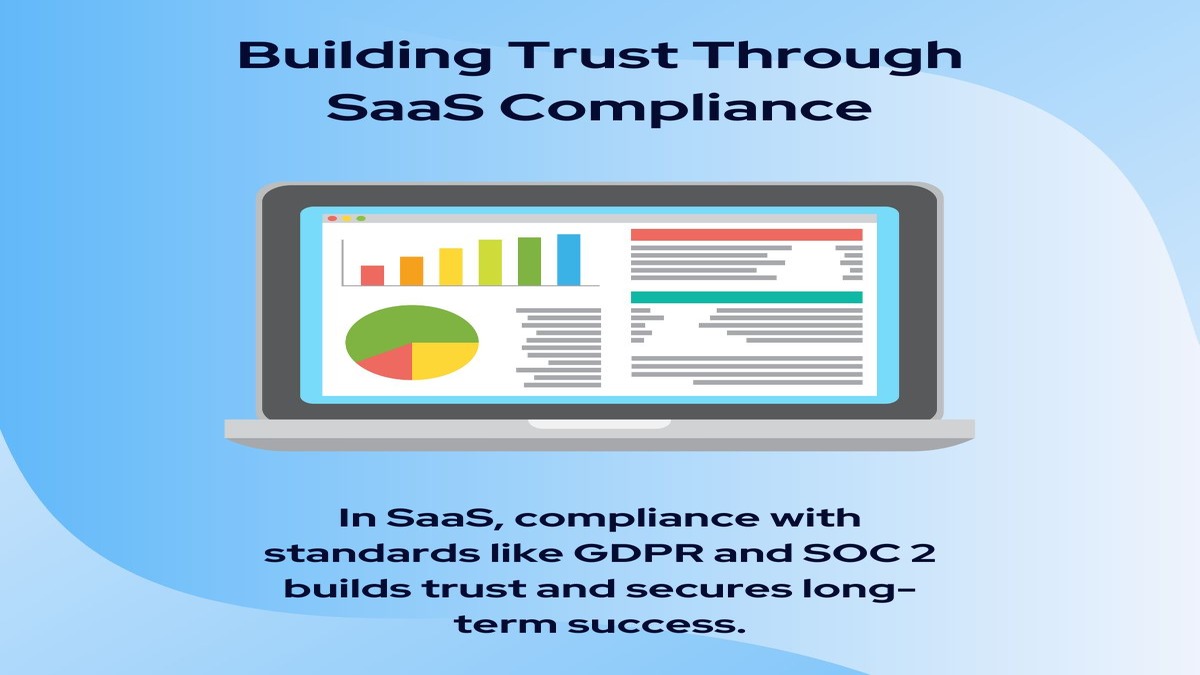
In the competitive landscape of Software as a Service (SaaS), compliance isn’t just a box-ticking exercise; it’s a cornerstone of building trust and ensuring long-term success. Adhering to regulatory frameworks like GDPR, SOC 2, and HIPAA not only aligns your SaaS business with legal requirements but also boosts your credibility and reliability in the eyes of customers.
-
Building Trust Through Compliance:
When users entrust your platform with sensitive data, they expect robust protection measures. By meeting these compliance standards, you showcase your commitment to data security, privacy, and ethical business practices. This trust can significantly influence customer retention and acquisition, as clients feel confident that their data is in safe hands.
-
Maintaining Compliances:
Moreover, maintaining compliance helps you avoid costly penalties and potential legal issues that could damage your reputation. It signals to stakeholders, investors, and partners that your company takes regulatory responsibilities seriously, which can pave the way for stronger business relationships and investment opportunities.
-
Enhancing Service Quality:
Continual compliance also drives internal improvements. Regular audits and security checks encourage a culture of vigilance and proactivity within your team. This focus on high standards can translate to better overall service quality, innovation, and operational efficiency.
In summary, investing in compliance is investing in your company’s future. By prioritizing regulatory adherence, you not only safeguard your business but also foster an environment of trust and confidence. This sets a strong foundation for growth, resilience, and sustained competitive advantage in the SaaS market.
Read More: Top 10 Popular SaaS Marketing Blogs in 2024

